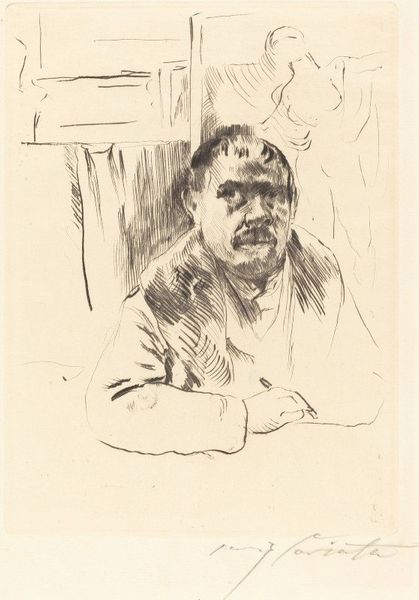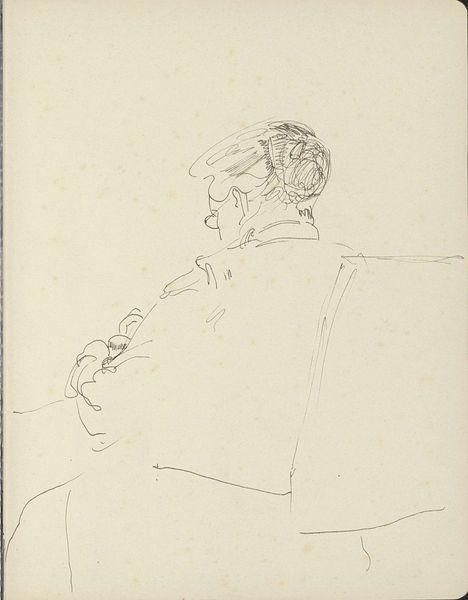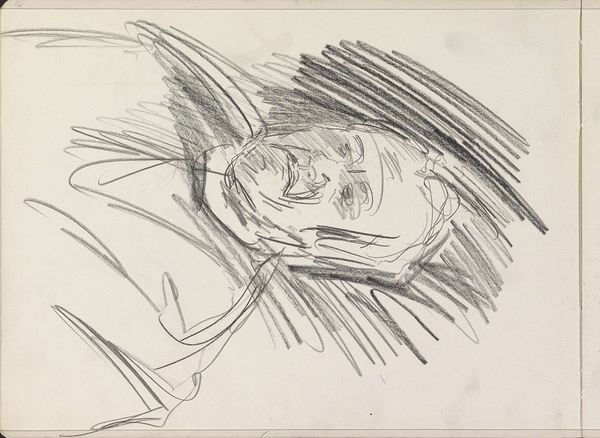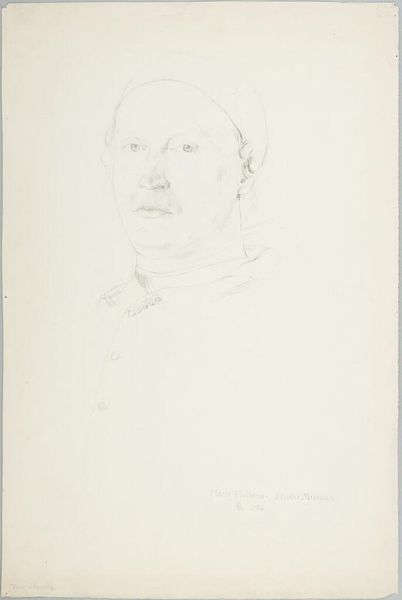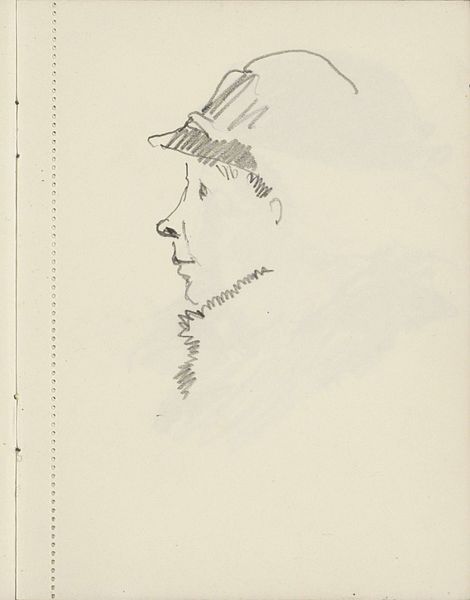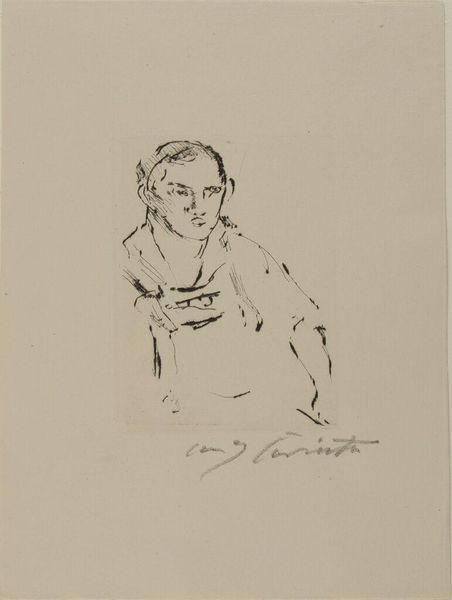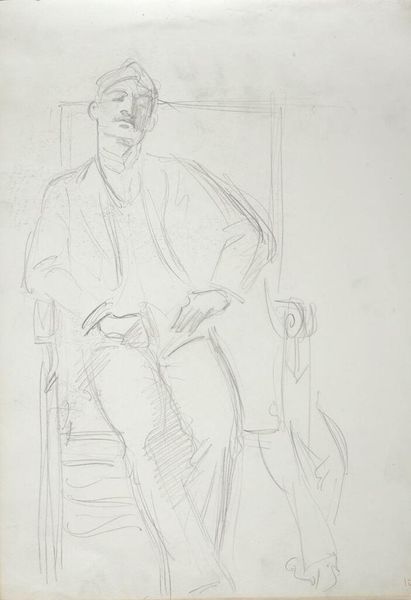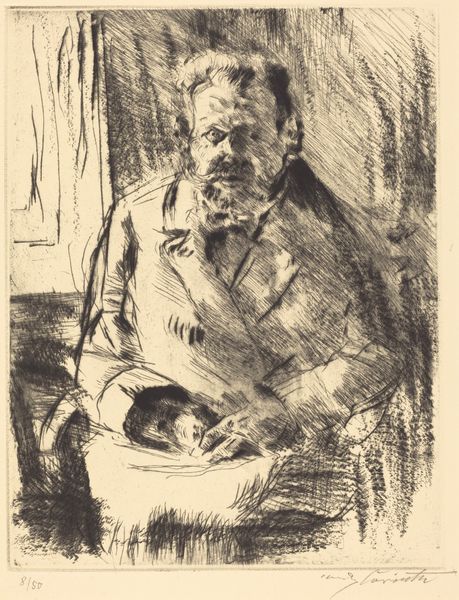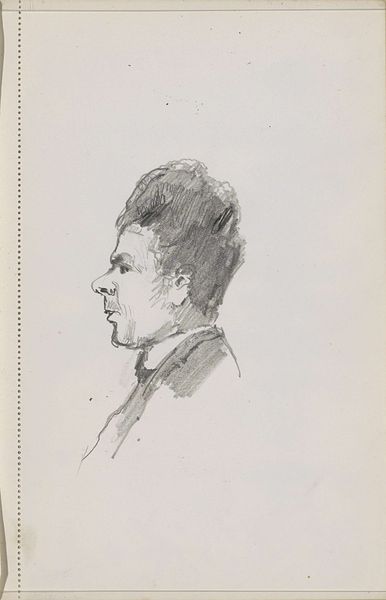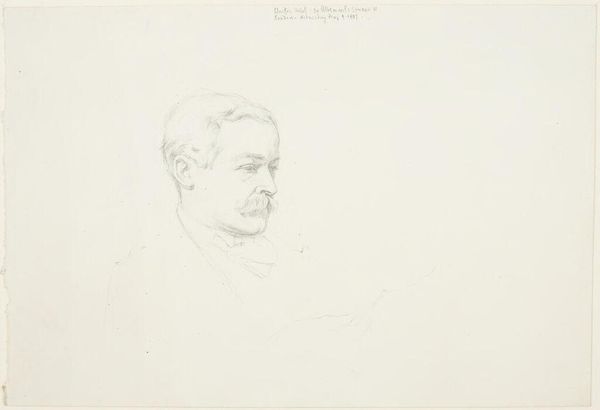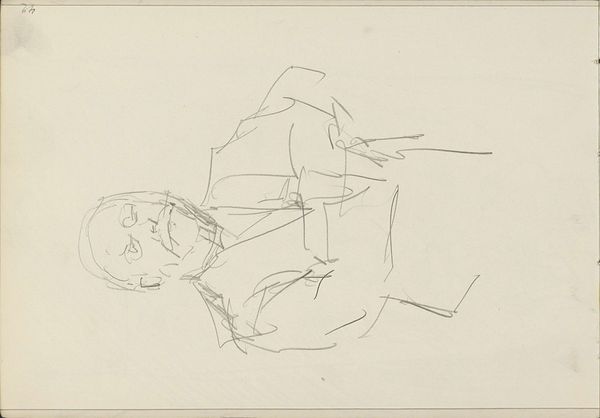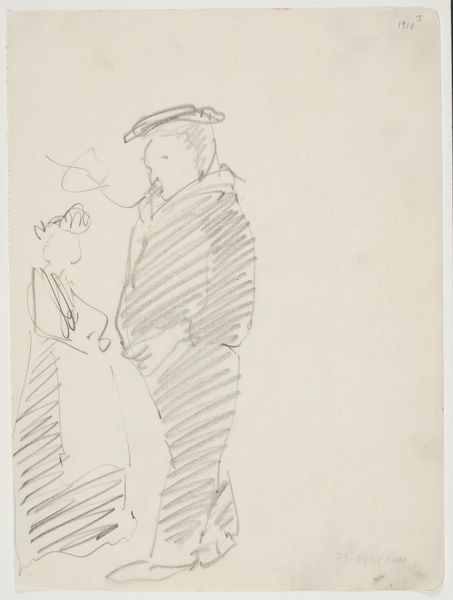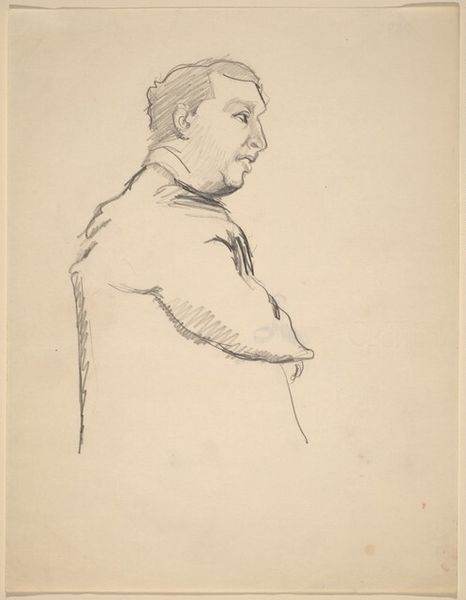
drawing, print, paper, pencil
#
portrait
#
pencil drawn
#
drawing
#
self-portrait
# print
#
pencil sketch
#
charcoal drawing
#
paper
#
pencil drawing
#
pencil
#
expressionism
#
portrait drawing
Dimensions: 158 × 215 mm (plate/image); 302 × 243 mm (sheet)
Copyright: Public Domain
Curator: Lovis Corinth's "Self-Portrait," created around 1920, offers us a glimpse into the artist's self-perception through the immediacy of pencil on paper. It's currently housed here at the Art Institute of Chicago. Editor: It feels intensely private. The rapid, almost frantic, strokes of the pencil convey a sense of vulnerability. There's a haunting quality in the direct gaze and the unfinished quality of the lines, like he's captured mid-thought. Curator: Considering the sociopolitical landscape of post-World War I Germany, it is striking to me that this piece was rendered. Artists like Corinth found themselves grappling with shifting cultural values and economic instability. How does the material-- the simplicity of pencil and paper -- play into this context? Did that easy availability play a role in his decision-making? Editor: The choice of pencil emphasizes its raw, expressive qualities. The economy of line, the stark contrast between light and shadow…it all directs the eye intensely to the artist’s face. We focus on his brow and eyes. There is almost a tension communicated through his very stern, unsettling stare. The materiality adds a level of grit, I believe. Curator: Absolutely. There is something almost brutal in its honesty, fitting with the Expressionist movement's emphasis on conveying inner emotion over objective representation. However, also remember the rise in manufactured pencils at that point and who was in control of their making. Those material and capitalist decisions surely affect the nature of this particular Expressionist statement. Editor: Yet, within the formal composition, observe the repetition of angular shapes – the lines of his brow, the sharp angles in the shadows under his eyes, even the faint lines defining his suit jacket. These all combine to create a feeling of unease and anxiety that certainly echoes the emotional landscape of the time, though this is filtered very particularly through Corinth's personal lens and chosen features. Curator: It makes you wonder about the availability of art materials and artistic labor during such a tumultuous time. Editor: It speaks volumes. An important statement is produced from accessible materials.
Comments
No comments
Be the first to comment and join the conversation on the ultimate creative platform.
